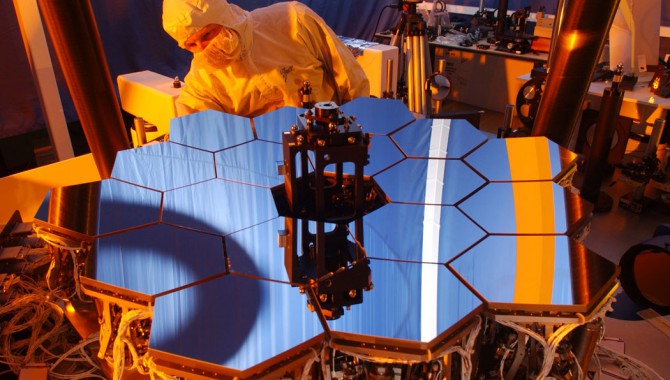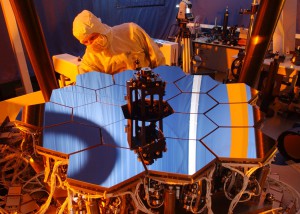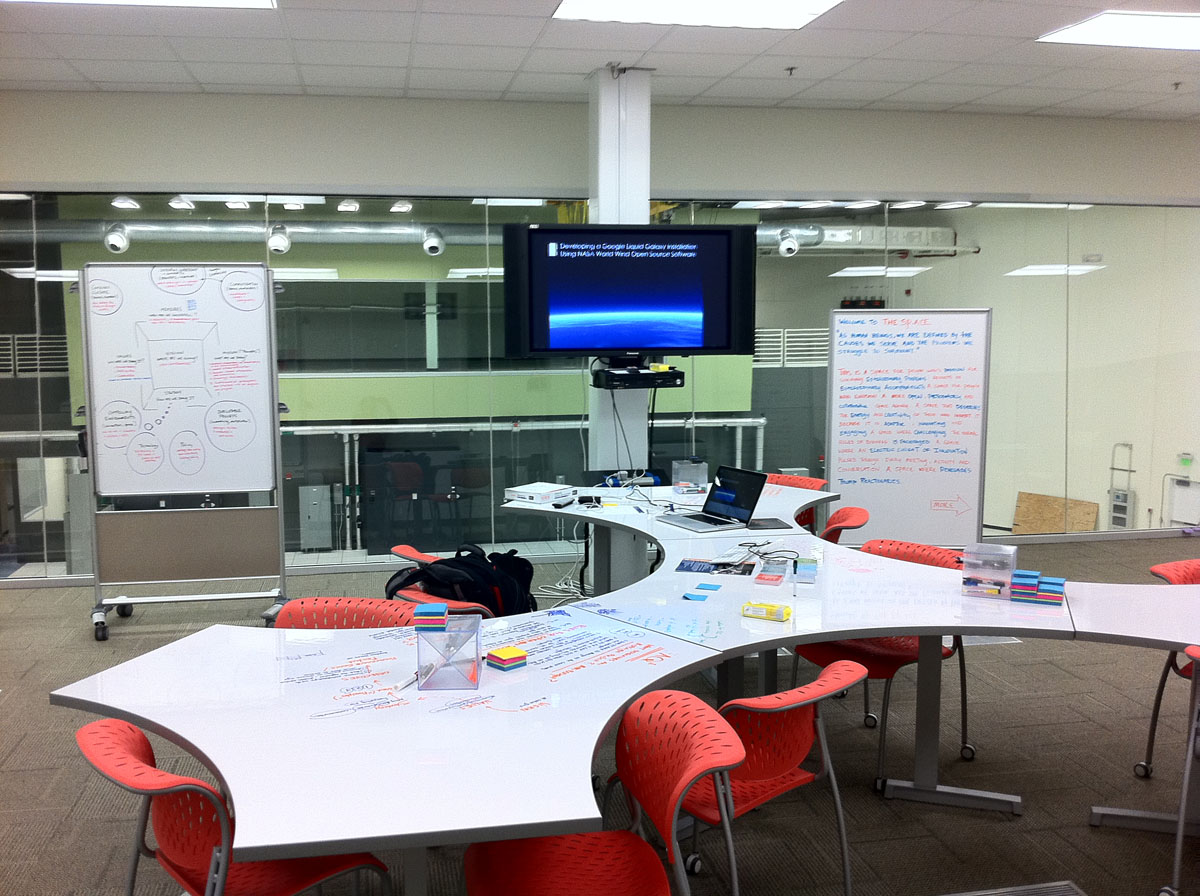
Fully functional, 1/6th scale model of the JWST mirror in optics testbed. Photo Credit: NASA
March 28, 2012 Vol. 5, Issue 3
GAO released its latest snapshot of how well NASA is planning and executing its major acquisition projects.
In its fourth annual assessment, the Government Accountability Office (GAO) provided insight into how NASA’s large-scale projects are advancing. Defined at having an estimated life-cycle cost of over $250M, the list of 21 large-scale projects in either formulation or implementation included the James Webb Space Telescope (JWST), Juno, ExoMars Trace Gas Orbiter (EMTGO), Mars Atmosphere and Volatile EvolutioN (MAVEN), Orbiting Carbon Observatory-2, and the Lunar Atmosphere and Dust Environment Explorer (LADEE).
While GAO did not offer specific recommendations for this particular review, it did have several findings to report. Excluding the largest project, JWST, 14 of the 15 projects in implementation experienced an average development cost growth of 14.6 percent ($79M) and schedule growth of eight months from their baseline estimates. Most of these projects remained relatively stable over the past year. With JWST included, these numbers increase to 47 percent cost growth and 11 months overdue. GAO observed that large projects such as JWST tend to have “cascading effects” on NASA’s project portfolio. For instance, the substantial cost overruns on the Mars Science Laboratory resulted in NASA having to take funding from other projects.
The report identified five hindrances to effective project performance:
- Launch vehicle cost and availability
- Contractor management challenges
- Parts, materials, and process challenges
- Development partner challenges domestically and internationally
- Funding
GAO acknowledged the unique nature of NASA projects and the challenge in applying knowledge from one type of project to another, but emphasized the benefit of applying a disciplined knowledge-based approach to its acquisitions. The report noted that nearly two-thirds of projects under review do not meet the best practice standards for technology maturity (e.g., having technology of a readiness level of at least 6 by the preliminary design review).
GAO recognized that the risk of cost and schedule overruns could be mitigated through the determination of joint cost and schedule confidence levels (JCL). This tool employs probabilistic analysis of cost, schedule, and risk inputs to determine development cost and schedule estimates. NASA has not yet launched a project that has completed a JCL, and it will take several years to evaluate the impact and effectiveness of the tool.










